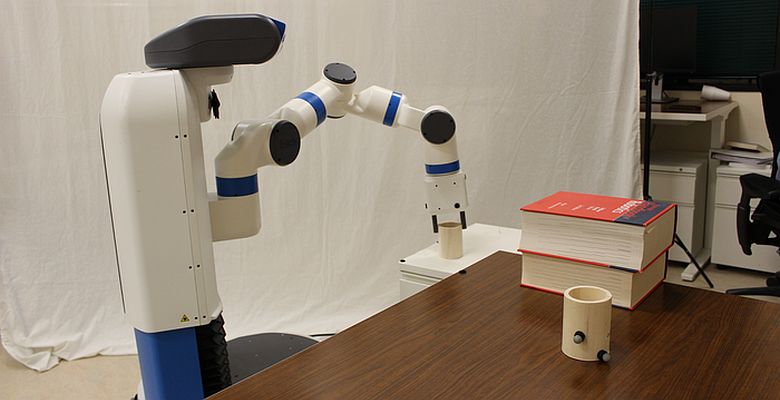Like humans, robots cannot see through walls. Sometimes they need a little help to get where they need to go. Computer scientists at Rice University in Houston, Texas, have developed a method for humans to help robots "see" their surroundings and perform tasks.
The strategy, called Bayesian Learning in the Dark - or BLIND for short - is a new solution to the long-standing problem of motion planning for robots working in environments where everything is not always clearly visible.
Algorithm
The algorithm keeps a human informed in order to improve robot perception and, more importantly, prevent the execution of unsafe movements, according to the researchers. To do this, they combined Bayesian inverse reinforcement learning (which allows a system to learn from constantly updated information and experience) with established motion planning techniques to help robots with high degrees of freedom, i.e. many moving parts.
To test BLIND, the Rice lab sent a Fetch robot, an articulated arm with seven joints, to pick up a small cylinder from a table and move it to another. In doing so, the robot had to get past a barrier. But when a robot has more joints, the instructions are complicated. A human usually directs well to simple commands. But a robot programmer must be specific about the movement of each joint at each point in its trajectory, especially when obstacles obstruct the machine's 'view' of its target location.
Human in the loop
Instead of programming a trajectory in advance, BLIND inserts a human intermediate process to refine the choreographed options - or best guesses - proposed by the robot's algorithm. BLIND allows programmers to take information into the human head and calculate trajectories in the given space with a high degree of freedom.
The developers use a specific way of feedback called criticality. In fact, it is a binary form of feedback where the human is given labels on pieces of the trajectory. These labels appear as connected green dots representing possible paths. As BLIND moves from point to point, the human approves or rejects each movement to refine the path and avoid obstacles as efficiently as possible.
It is an easy interface for humans to use, as they can say "I like this" or "I don't like this". The robot uses this information to plan. Once it has been fed an approved set of movements, the robot can carry out its task.
Mathematics
One of the most important things is that human preferences are difficult to describe with a mathematical formula. The work at Rice University simplifies human-robot relationships by including human preferences. That way, applications will benefit most from this work.
The research is an example of how a small, but focused, human intervention can significantly improve robots' ability to perform complex tasks. This applies to environments where some components are completely unknown to the robot, but known to humans. It shows how methods for human-robot interaction and automated planning can merge to provide reliable solutions that also respect human preferences.
Photo: Kavraki Lab, Rice University

